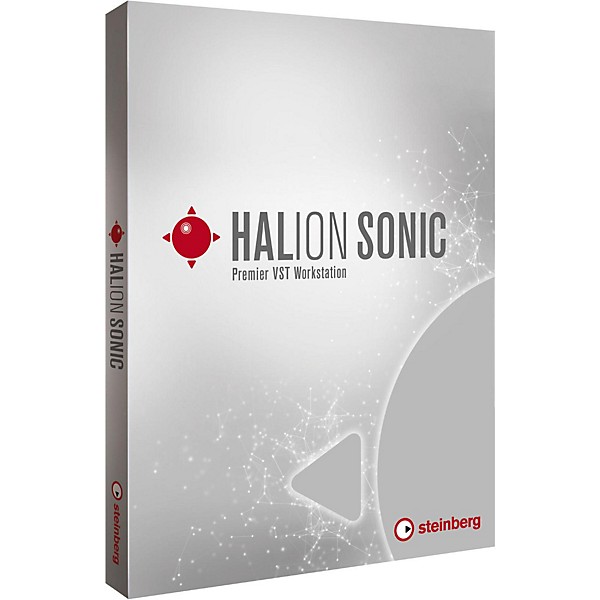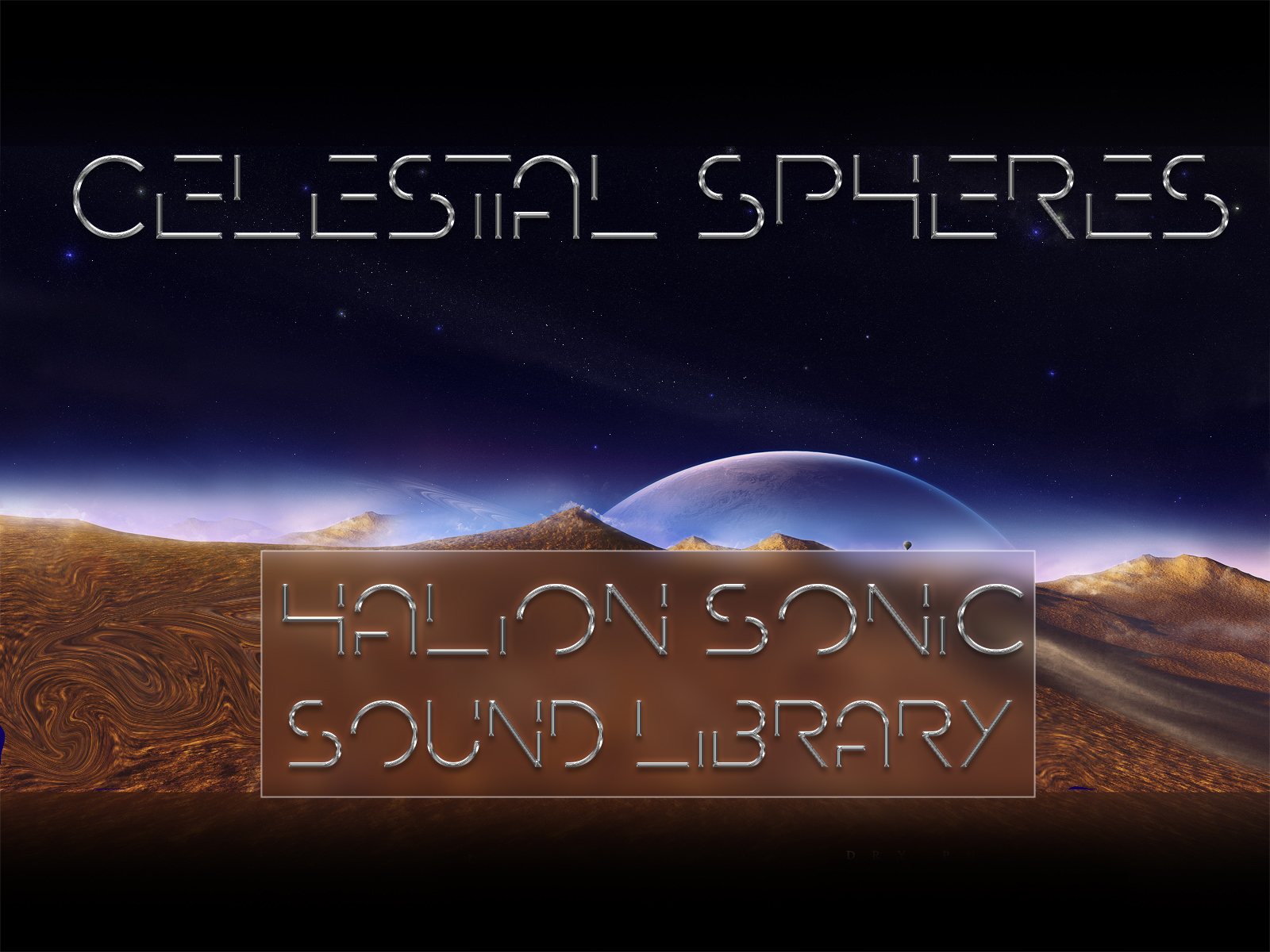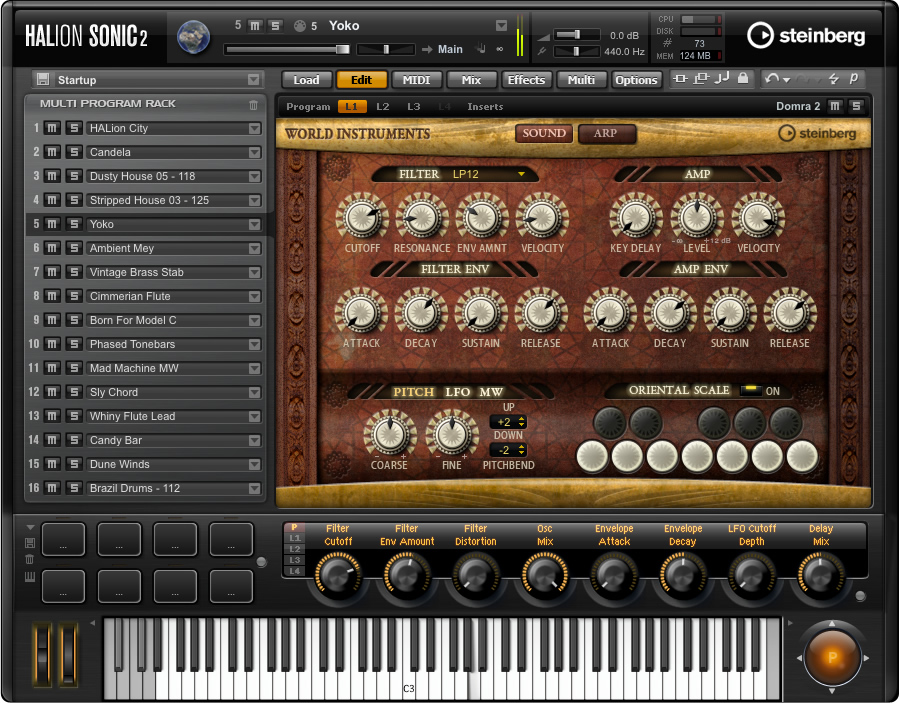A beautiful and warm sounding upright piano. Sampled with and without mute pedal. Every note sounds different and has its own character which gives very natural and organic results. This sample library is far from being sterril. It has its unique sonic quality which fits perfectly into calm and intimate music genres.
Demos:
Catching Memories by Patryk Scelina – 4:43
Search results showing audio plugins for all operating systems (Windows, MacOS, Linux, iOS and Android), tagged as Sound Library for HALion Sonic 3 SE. The results are sorted by date added (newest first).
With the release of HALion Sonic SE 3, featuring granular, virtual analog, wavetable synthesis, ultra-authentic tone wheel organ and powerful sample playback, creators now have a solid platform on which to build high quality virtual instruments. The Steinberg Library Manager is a tool that allows you to manage additional content, for example, moving or deleting HALion and Groove Agent sound libraries. It is being installed along with many current Steinberg programs. If required, you can separately download the latest version here.
OUR FIRST INSTRUMENT
We recorded an elegant contemporary upright piano, in semi-dry room. Which gives our instrument nice and present close sound. But You can still hear a room reacting to that sound. The most gorgeous sound recorded is with mute pedal (Novel Piano patch). It sound amazing from up close, but room sound gives it even more character and depth. It may not be perfect for all scenarios though. That is why there is another set of samples recorded traditionally without mute ( Scoring Piano patch) to make our instrument more flexible and useful in more every day situations. Smaller but very important part of Novel Piano library is sustain pedal mechanism, which volume can be changed directly from instrument GUI.
Piano was recorded with 7 microphones: 2 close mics pointing sound board, 1 close microphone placed low just above the ground to capture entire richness and low-end, 2 room mics placed just behind player in order to capture player’s perspective, 2 ambience mics placed 5 meters from the piano.
We spent a lot of time in post production, carefully choosing samples from different takes to make sure every sounds nice and clear. We also denoised all recorded tracks to avoid unwanted noise stacking while playing an instrument. We mixed all recorded tracks to stereo. It makes our library very light for CPU and RAM and also makes it perfect companion for traveling musicians who use notebooks.

GUI:
THE OVERVIEW PANEL
Novel Piano’s GUI is clean and straightforward. It has three knobs which are responsible for different effects. Release noise controls key release mechanism volume, you can take it down to get rid of it completely. Character knob on the other hand is an controller of EQ and filter which are cutting or boosting high frequencies, depending on setting. Finally reverb mix is self explanatory. There is an algorithmic hall type reverb onboard, which you can turn down completely if needed.
PATCH LIST:
- Novel Piano
- Scoring Piano
- Fairy Tale Piano
SYSTEM REQUIREMENTS:

- This library works in free Halion Sonic SE 3.4 sample player (Download Halion Sonic SE 3) as well as Halion 6 and Halion Sonic 6.
Watch our installation guide on YouTube - Runs as host or stand-alone application, VST® or Audio Units plug-in, AAX® under Pro Tools
- Baltic Shimmers requires 1.2 GB of HDD/SSD space
- Sample resolution: 48 Khz / 24 Bit stereo .wav format (losslessly compressed)
- Halion / Halion Sonic SE 3.4 requirments:
| MAC OSx – Requirments | Windows – Requirments |
|---|---|
| macOS 10.12 / 10.13 / 10.14 / 10.15 | 64-bit Windows 8.x/10 |
| VST 3, AAX compatible host application for using as plug-in | VST 2, VST 3 or AAX compatible host application for using as plug-in |
| 64-bit Intel or AMD multi-core processor (Intel i5 or faster recommended) | 64-bit Intel or AMD multi-core processor (Intel i5 or faster recommended) |
| 4 GB RAM (8 GB recommended) | 4 GB RAM (8 GB recommended) |
| 1366 x 768 display resolution (1920 x 1080 recommended) | 1366 x 768 display resolution (1920 x 1080 recommended) |
Libraries usually contain instruments that are designed for a special purpose.
A typical instrument consists of the following:
- Several zones organized in layers.
- A macro page that gives access to the most important parameters.
- A Lua Script MIDI module and/or other MIDI modules.
- A bus and insert effects.

The program structure of your instrument in the Program Tree of HALion might look as simple as this:

The program structure of your instrument must fulfill the following requirements to work in HALion Sonic (SE):
The macro page must be attached to the top element in the Program Tree. In the example above, this would be the element Instrument. HALion Sonic (SE) will not see the macro page if it is not attached to the top element.
In previous versions of HALion Sonic (SE) (< 3.2) the maximum size of the macro page was limited to 595 x 390 pixels. Versions 3.2 and higher do not have this restiction. The macro page can be of any reasonable size.
- The last element in the Program Tree must be one bus with a maximum of four insert effects. In the example above, this would be the element Instrument-Bus. There must be only one bus at the top level. Several busses at the top level are not allowed. The maximum number of insert effects per Layer in HALion Sonic (SE) is limited to four. The insert effects are optional. In the example above, the Instrument-Bus does not have any insert effects. In fact, it is good practice to leave the bus empty in HALion and assign the insert effects later on the Inserts tab in HALion Sonic.
If you export a Program as HALion Sonic SE Layer preset and the program structure does not comply with these requirements, HALion will warn you that the Layer preset will not be accepted by HALion Sonic (SE).
The following elements can be added freely to the program structure:
- You can add as many sublayers and zones as you want.
- You can place MIDI modules below the top element or inside of sublayers as needed.
- You can add additional busses with insert effects inside of sublayers. These effects become an integral part of your instrument. To adjust the effect, you must add controls on the macro page and connect them to the effect parameters.
The following picture shows the instrument from above, with an additional bus and insert effect.
Halion Sonic 6 Download
If you follow these guidelines, your instrument will be compatible with HALion Sonic (SE):
- Except for the topmost and the last element in the Program Tree, the program structure can be set up as needed for your instrument.
- Inside the Instrument element, you are free to add any element you want.
- You must set up a macro page that provides access to the important parameters. The macro page must be attached to the topmost element.
- The Instrument-Bus is already part of HALion Sonic (SE) program structure. You can assign up to four insert effects to it.
When you design your instrument in HALion, it is created as a Program and saved as VST3 Program preset. The final sound design is usually done in HALion Sonic. However, before you can load your instrument in HALion Sonic, you must export it as HALion Sonic SE Layer preset. The export in HALion Sonic SE format allows you to load and test your instrument in HALion Sonic SE.
The layout of HALion Sonic (SE)'s interface and features requires some specific MIDI modules and busses. When you load a Layer preset in HALion Sonic (SE), any missing MIDI modules, busses, etc. that are required for HALion Sonic (SE) to operate are added automatically. For example, if the Instrument-Bus was missingin the example above, HALion Sonic (SE) would add this bus when loading the Layer preset, because it is needed for the Inserts tab in HALion Sonic.

The following picture shows the program structure of the example instrument after these steps:
- In HALion, export the instrument with Export Program as HALion Sonic SE Layer Preset.
- Load the exported Layer in HALion Sonic and save it as Program preset.
- Load this Program preset in HALion.
The Trigger Pads, two FlexPhrasers and a Program-Bus were added, because HALion Sonic (SE) requires them.
If you load a Program preset from HALion Sonic (SE) in HALion, do not export the Program preset as HALion Sonic SE Layer preset again. If you do so and load this preset in HALion Sonic (SE), the MIDI modules will be added again and the preset will not be compatible anymore. You must use the HS Edit mode instead. See Using HS Edit Mode for details.
Once your instrument is finished, the final sound design can start.
The exported HALion Sonic SE Layer preset usually serves as your init preset for doing the final sound design in HALion Sonic.
Doing the final sound design in HALion Sonic has the following advantages:
- The required elements are added automatically.
- You have access to the Program tab, which allows you to combine up to four instruments, for example.
- You have access to the Inserts tab, which allows you to assign insert effects to the layers and the program.
- Additional parameters from HALion are hidden and cannot be adjusted by mistake.
Halion Sonic Se Content Download
You could also do the final sound design in HALion Sonic SE. But, then you would not have access to HALion Sonic's Program and Inserts tab, which limits the sound design possibilities.
After the sound design, you can save your finished sound as HALion Sonic Program preset. In this step you should tag your presets in the MediaBay. See the MediaBay Guideline for more details.
Halion Free
It is recommended to save your sounds as Program presets rather than HALion Sonic SE Layer presets, because Steinberg users mainly use the Program filter when browsing for presets in the MediaBay.
In HALion in the Library Creator, if you choose to build your library as HALion Sonic SE library, all HALion Sonic presets are converted to HALion Sonic SE presets.
To correct settings in your instrument, choose one of the two following ways:
Using Export Program as HALion Sonic SE Layer preset
If you need to correct settings in the phase of testing your instrument in HALion Sonic (SE) and if you have not done any serious sound design or saved further presets yet:
- Go back to the original HALion Program preset of your instrument.
- Correct settings as required and save the edits to the original HALion Program preset.
- Export the instrument again as HALion Sonic SE Layer preset.
Using HALion Sonic Edit Mode
Halion Sonic Library Manager
If you need to correct settings in the phase of sound design and you already created HALion Sonic (SE) Program presets:
Halion Sonic Libraries Games
Load the HALion Sonic (SE) Program preset of your instrument. The HALion Sonic Edit Mode will be activated. This ensures that you cannot accidentally change the program structure that is required by HALion Sonic (SE).
Do not deactivate HS Edit mode, it cannot be activated manually.
- Correct settings as appropriate and save the Program preset. If the HALion Sonic Edit Mode is active, the preset will be saved in the HALion Sonic (SE) preset format.
Halion Sonic Se Libraries
The HALion Sonic Edit Mode can be switched off permanently with the corresponding setting on the Options page. When loading HALion Sonic (SE) Program presets, the HALion Sonic Edit Mode will only be activated if the setting on the Options page is turned on. See HALion Sonic Edit Mode for details.
